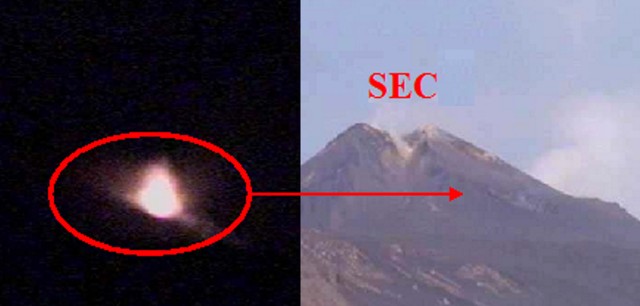Report on Etna (Italy) — July 2007
Bulletin of the Global Volcanism Network, vol. 32, no. 7 (July 2007)
Managing Editor: Richard Wunderman.
Etna (Italy) Ash emissions started 15 August and built a small cinder cone on SEC's E flank
Please cite this report as:
Global Volcanism Program, 2007. Report on Etna (Italy) (Wunderman, R., ed.). Bulletin of the Global Volcanism Network, 32:7. Smithsonian Institution. https://doi.org/10.5479/si.GVP.BGVN200707-211060
Etna
Italy
37.748°N, 14.999°E; summit elev. 3357 m
All times are local (unless otherwise noted)
According to Sonia Calvari of the Istituto Nazionale di Geofisica e Vulcanologia Sezione di Catania (INGV-CT), on 15 August the Southeast Crater (SEC) at the summit of Mount Etna began to produce ash emissions. They emerged at the depression that cuts the SEC's E flank. The ash cloud was very diffuse, rising for just a few ten's of meters above the source, and it was quickly dispersed by the wind. Reddish-colored ashfall deposits were observed only on the flanks of the SEC cone.
During the night of 21 August the summit web-camera of INGV-CT recorded incandescent blocks erupted during the most energetic emissions. A field survey on 22 August observed few very energetic events (about 20% of the total), cases where the ejection of hot, lithic blocks fell on the E flank of the cone. On 24 August, researchers from INGV on the summit with a thermal camera recorded the first short Strombolian sequence. Strombolian explosions increased in intensity and became more common through August, slowly amassing material to create a cinder cone within the depression on the SEC's E flank. Etna's emissions continued through August (figure 123) and into at least early September. Later INGV reports noted a strong eruption during 4-5 September.
Geological Summary. Mount Etna, towering above Catania on the island of Sicily, has one of the world's longest documented records of volcanism, dating back to 1500 BCE. Historical lava flows of basaltic composition cover much of the surface of this massive volcano, whose edifice is the highest and most voluminous in Italy. The Mongibello stratovolcano, truncated by several small calderas, was constructed during the late Pleistocene and Holocene over an older shield volcano. The most prominent morphological feature of Etna is the Valle del Bove, a 5 x 10 km caldera open to the east. Two styles of eruptive activity typically occur, sometimes simultaneously. Persistent explosive eruptions, sometimes with minor lava emissions, take place from one or more summit craters. Flank vents, typically with higher effusion rates, are less frequently active and originate from fissures that open progressively downward from near the summit (usually accompanied by Strombolian eruptions at the upper end). Cinder cones are commonly constructed over the vents of lower-flank lava flows. Lava flows extend to the foot of the volcano on all sides and have reached the sea over a broad area on the SE flank.
Information Contacts: Sonia Calvari, Istituto Nazionale di Geofisica e Vulcanologia Sezione di Catania, Piazza Roma 2, 95123 Catania, Italy (URL: http://www.ct.ingv.it/).


